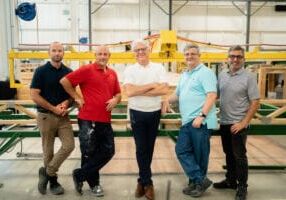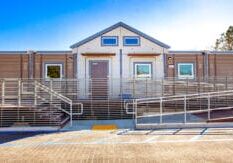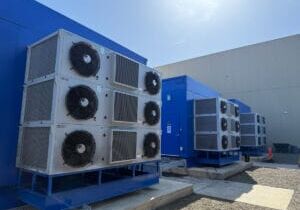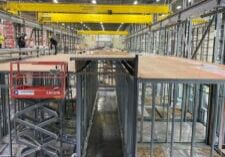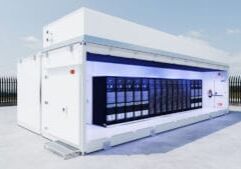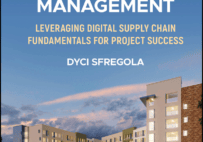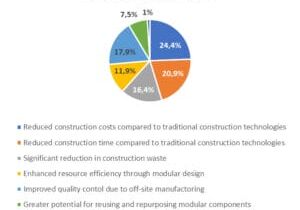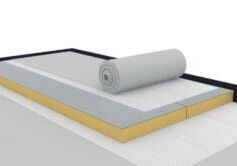homeD: On a Mission to Improve Affordable Housing in Canada
The modular building industry offers a variety of innovative solutions to the challenges of the built environment. But what about homelessness? That problem has seemed to be growing worse despite all efforts to combat it.
That’s where North Vancouver, B.C. company homeD comes in. The company’s mission is to alleviate homelessness and they’ve developed unique products to that end. The company also embraces a strong social justice ethic, providing solutions for marginalized communities who face housing challenges, and is aligned with the UN’s Sustainable Development Goals.
“The company centers its efforts on addressing homelessness by focusing on a spectrum of below-market housing, from emergency shelters to detached homes,” says Michele Tung, CEO and co-founder at homeD. “The assembly process of manufacturing volumetric modular homes lies at the core of homeD’s approach, driven by the guiding principle of the ‘homeD Circle of Good.’”
The “Circle of Good” reflects the core values of the company, which include:
- Impact: local manufacturing and assembly
- Employment and training: fair wages
- Self-respect: wrap-around support programs
- Dignity: safe and beautiful homes
- Sustainability: building locally manufactured high-performance communities.

Interior perspective of a standard layout of homeD's BoxPod, complete with a kitchen and full bathroom.
How homeD Got Started
When architect James Law noticed people in Mumbai using precast water pipes as housing, he saw an opportunity to transform that ubiquitous material and upgrade it for people facing housing challenges. That led directly to homeD’s OPod concrete housing module. He contacted friends and colleagues Michele Tung and Frank Christiaens and together they created homeD. The homeD team now includes people with expertise in architecture, construction, manufacturing, and start-ups.
What homeD Makes
The current product lineup features the 350-sqft BoxPod, which originates from precast concrete box culverts and can be expanded into larger units. “These self-contained living units, equipped with a kitchenette, bathroom, and adaptable living space opened new doors for community development, poverty alleviation, employment generation, and reducing inequalities,” Tung said.
The BoxPod can be stacked in dense urban environments Additionally, the BoxPod can be used to create freestanding structures that are at least three stories high. The company originally used standard precast units sourced from suppliers and later developed monolithic forms that enable pouring in a single operation.
With further development of the BoxPod, the company also started using cementitious insulated panels. According to Tung, “Clients preferred the durability of concrete, yet the environmental concerns persisted. Moreover, we faced R-value considerations due to Canada’s colder climate.”
Depending on the climate conditions at the project site, different materials will be appropriate, she noted. In warmer climates without need for insulation, precast concrete BoxPods perform well, Tung said. “For colder areas like Canada requiring insulation, we are currently utilizing SIPs.”
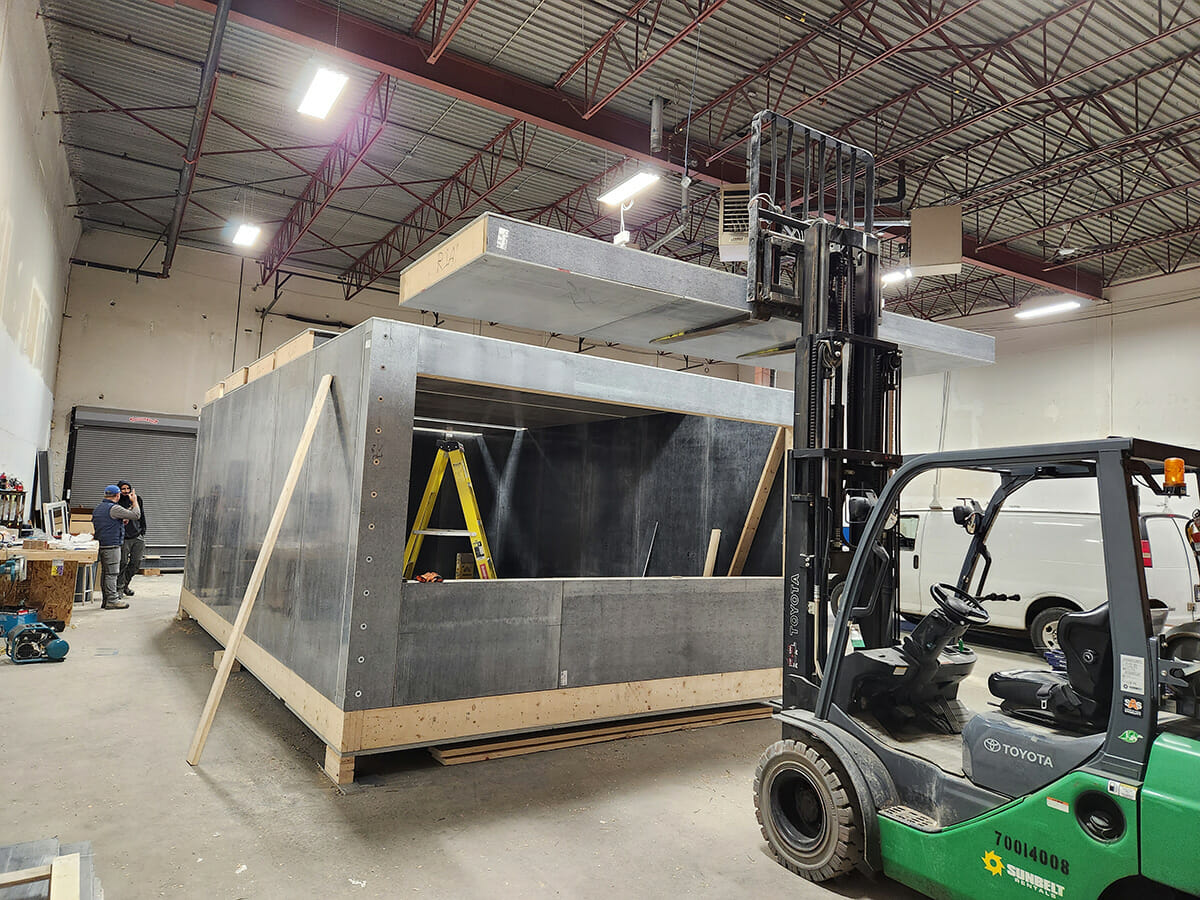
Building of a BoxPod in Vancouver, BC.
Under development at homeD are BoxPods that optimize IoT (internet of things) functionality. IoT provides for robust monitoring for resident well-being and health, such as for seniors and fall detection. In addition, IoT integration can provide home status updates for concerns like blackwater flooding, then alert a central office to address the issue.
“The assembly process,” Tung noted, “honed through years of experience in the construction and technology industry, has been optimized for speed, precision, and quality. This method allows for easy customization and adaptation of the housing units to cater to various needs and requirements.”
Tung said that the company’s designs can also be constructed outside of their own manufacturing facilities, in pop-up factories, set up in mobile tents or airport hangars, for assembly. “We’re capable of constructing two BoxPods weekly in spaces as small as 3000 square feet. Achieving lockup stage takes just one day,” she said.
That flexibility also meshes well with the need for skilled workers. By 2030, Tung noted, an estimated 300,000 skilled trades workers will be lacking, which will add pressure to housing costs and the pace of production. homeD aims to construct where homes are needed, along with training local people in rapid home assembly. “This approach allows us to collaborate with remote and rural communities, engaging locals in constructing their homes,” she added.
BC’s Housing Landscape
As you would probably expect, British Columbia’s housing situation is quite dynamic. Economic conditions, population growth, government policies, and initiatives like the Rapid Housing Initiative all play a role.
The 2022 Rapid Housing Initiative (RHI) aims to create 4,500 new affordable housing units for people and populations who are vulnerable and targeted under the country’s National Housing Strategy. Though challenges continue, the RHI has shown benefits, Tung said. “This initiative has contributed to the creation of much-needed housing units, helping vulnerable populations gain access to safe and stable shelter. It has also contributed to job creation and economic stimulus within the construction industry,” she noted.
“Our intention isn’t for individuals to remain confined within their homes, but rather to cultivate an inviting and lively shared space that encourages interaction, sports, and community development opportunities.”
The challenges boil down to, essentially, increasing demand and home prices due to population growth across many parts of British Columbia and Canada, especially in urban centers.
Addressing the challenge of supply, demand, and affordability, Tung said, will involve several approaches, including:
- Increasing supply: continue creating affordable housing units through initiatives like the RHI, as well as exploring innovative construction methods and partnerships to expedite the process.
- Diverse housing options: different people need different housing options, so affordable rentals, co-operative housing, and supportive housing for vulnerable populations should be expanded.
- Housing first approach: provide stable housing for homeless individuals as the first step, and then offer other necessary support services.
- Policy and regulation: government policies need to promote affordable housing development, incentivize purpose-built rental construction, and address land-use regulations that might hinder housing construction.
- Collaboration: foster collaboration between government bodies, non-profit organizations, private sector developers, and communities to maximize the impact of housing initiatives.
- Sustainable solutions: contribute to environmental goals and reduce long-term housing costs by building energy-efficient and sustainable housing.
homeD Manufacturing Facilities
According to Tung, the company’s manufacturing facilities were created to prioritize efficiency, scalability, and environmental sustainability, aligning with homeD’s commitment to reducing carbon emissions and utilizing green technologies.
The Importance of Community and Social Justice
Community is an important part of homeD’s mission. Each project blends with its environment so that residents enjoy multi-use common areas, gardens, and sports areas. Community can span all age groups, as well, from young singles and families to senior citizens. The design encourages people to get outside and engage with each other.
“Our intention isn’t for individuals to remain confined within their homes, but rather to cultivate an inviting and lively shared space that encourages interaction, sports, and community development opportunities,” Tung said.
A current project with urban Indigenous communities in Vancouver involves working with people grappling with homelessness, comprehending their cultural heritage, and honoring their history. In this project, the communal space features a circular area for private prayer and a garden for cultivating sacred plants used in smudging ceremonies. homeD collaborates with the client to comprehend the intended use and requirements of the development. “Accordingly, we customize the standardized BoxPods to align with their needs,” Tung said.
Projects promoting social justice include the establishment of 30 BoxPods in Vancouver, BC, for Indigenous housing. Moreover, we have several upcoming initiatives targeting affordable and attainable housing challenges in the Sunshine Coast and Greater Vancouver Regional District. These endeavors underscore our dedication to enhancing housing accessibility, Tung said.
The Importance of Community and Social Justice
Community is an important part of homeD’s mission. Each project blends with its environment so that residents enjoy multi-use common areas, gardens, and sports areas. Community can span all age groups, as well, from young singles and families to senior citizens. The design encourages people to get outside and engage with each other.
“Our intention isn’t for individuals to remain confined within their homes, but rather to cultivate an inviting and lively shared space that encourages interaction, sports, and community development opportunities,” Tung said.
A current project with urban Indigenous communities in Vancouver involves working with people grappling with homelessness, comprehending their cultural heritage, and honoring their history. In this project, the communal space features a circular area for private prayer and a garden for cultivating sacred plants used in smudging ceremonies. homeD collaborates with the client to comprehend the intended use and requirements of the development. “Accordingly, we customize the standardized BoxPods to align with their needs,” Tung said.
Projects promoting social justice include the establishment of 30 BoxPods in Vancouver, BC, for Indigenous housing. Moreover, we have several upcoming initiatives targeting affordable and attainable housing challenges in the Sunshine Coast and Greater Vancouver Regional District. These endeavors underscore our dedication to enhancing housing accessibility, Tung said.
Steps Beyond Additional Housing Units
An innovative approach to increasing the number of affordable housing units, Tung said, is the use of community land trusts (CLTs) for affordable housing. This type of non-profit organization acquires and holds land to maintain community control over housing and ensure long-term affordability.
CLTs have a few ways of achieving these goals, she noted:
- CLTs purchase and maintain ownership of the land while leasing it to developers or homeowners for building.
- CLTs regulate resale prices of homes to reflect the original purchase price plus a limited percentage increase to ensure continuing affordability.
- Mixed-income communities can be a part of a CLT to promote diverse and vibrant communities while avoiding the creation of isolated pockets of poverty.
- CLTs typically embrace a local-governance structure with a board of directors made up of residents, community members, and local stakeholders.
These approaches provide a few predictable benefits, Tung said, including long-term affordability, community stability, public-private collaboration, and attracting innovative funding from philanthropic sources, impact investors, and government grants.
A Look into the Crystal Ball
Looking at the next three to five years, Tung said homeD expects to see significant growth and impact as the company addresses affordable housing in Canada and internationally. homeD will be focusing on several key areas:
- Project expansion: expand the project portfolio in Canada and internationally.
- Innovative solutions: continue to explore new technologies, materials, and design concepts to improve efficiency, affordability, and environmental sustainability.
- Community partnerships: continue to collaborate with public and private sectors, non-profit organizations, and community stakeholders.
- Expansion of product offerings: explore further product offerings that align with their mission, such as different types of modular units, expanding into related areas like hospitals, and exploring smart housing solutions.
- Government engagement: continue to engage with government bodies to advocate for supportive policies that promote affordable housing and innovation in construction.
- Scaling impact: continue to focus on dignity, affordability, and environmental consciousness through the “Circle of Good” philosophy.
“Overall, the next 3-5 years for homeD will be marked by growth, innovation, and a steadfast commitment to solving the affordable housing crisis through creative and impactful solutions,” Tung noted.
Transforming Urban Indigenous Communities Through Innovative Housing Solutions
Background
homeD, a trailblazing company in the housing industry, is on a mission to redefine the way we approach homelessness and affordable housing using high-performance buildings. With a team of experienced professionals across architecture, technology, and manufacturing, homeD is dedicated to creating sustainable housing solutions that make a positive impact.
Challenge
In Vancouver’s Downtown East side (DTES), the issue of homelessness is particularly acute, especially among urban Indigenous communities. The lack of affordable housing options has contributed to the cycle of homelessness, leaving individuals and families without stable shelter. homeD recognized the urgency of the situation and set out to provide innovative high performance housing solutions.
Solution
homeD’s pioneering approach involves using BoxPods, modular housing units that are cost-effective, environmentally friendly, highly adaptable, step-code 4 ready and zero-carbon compliant. For the urban Indigenous communities in DTES, homeD aimed to create a project that not only provided housing but also respected the cultural heritage of the residents.
Implementation
The E. Georgia, consisting of 30 BoxPods, is a testament to homeD’s commitment to making a difference. Designed specifically for urban Indigenous communities, the project takes into account the unique needs and cultural aspects of the residents. From communal areas designed for prayer and cultural practices to gardens for sacred plants used in smudging ceremonies, every detail was meticulously considered.
Results
Michele Tung, CEO of homeD, shared her thoughts: “The E. Georgia project is more than just housing; it’s about honoring the history and culture of the Indigenous communities. This project exemplifies our commitment to meaningful solutions that respect people’s dignity.”
Future Outlook
As homeD forges ahead with its project expansion, the E. Georgia endeavor stands as a blueprint for what lies ahead. Through community engagement, needs comprehension, and reverence for traditions, homeD strives to formulate housing solutions that empower individuals and cultivate a sense of community.
With a steadfast commitment to sustainability, homeD envisions a future where affordable housing encompasses environmental consciousness. Rooted in their “homeD Circle of Good” philosophy, the company is resolute in delivering housing solutions that resonate locally while upholding assembly processes that accommodate varied needs and cultures.
Conclusion
The E. Georgia project exemplifies homeD’s unwavering commitment to combat homelessness through innovative and culturally attuned housing solutions. By fusing design, technology, and a profound grasp of community requirements, homeD is not solely furnishing shelter but also revitalizing optimism and respect within Vancouver’s urban Indigenous communities in the DTES.
About the Author: Steve Hansen is a Colorado-based writer with a focus on the built environment—architecture, construction, renewable energy, and transportation. He can be reached on LinkedIn.
More from Modular Advantage
Resia: Breaking All the Rules
Resia Manufacturing, a division of U.S.-based Resia, is now offering prefabricated bathroom and kitchen components to industry partners. Its hybrid fabrication facility produces more precise bathroom and kitchen components (modules) faster and at lower cost than traditional construction. Here’s how Resia Manufacturing does it.
How LINQ Modular Innovates to Bring Modular To The Market in the UAE and Beyond
LINQ Modular, with an office and three manufacturing facilities in Dubai, is a modular firm based in United Arab Emirates. The company is on a mission: to break open the housing and construction markets in the Gulf Cooperation Council (GCC) area with modular.
ModMax: Redefining Modular Construction with Confidence and Precision
ModMax was born out of frustration—frustration with five persistent pain points in modular construction: Permitting bottlenecks. Production delays. Rigid designs. Disconnect between “the office” and the field. Lack of transparency and communication.
LifeArk: Disaster-Resilient Housing from Recycled Plastic and 100-year-old Technology
Wee compares LifeArk’s housing units to Yeti coolers, as they are built similarly. Each component takes 15 to 20 minutes to manufacture, has an R-value of 40, and includes molded slots and chases for wiring, plumbing, fire sprinklers, and other utilities.
Building the Future of Modular Edge Infrastructure
The edge data center market is expanding rapidly, driven by the surge in AI workloads, IoT adoption, and the need for localized compute power. In these environments, sustainability, scalability, and reliability are non-negotiable. Cooling is among the most complex challenges for operators—and one of the most decisive factors in long-term success.
Accelerating Light-Gauge Steel Construction: A Semi-Automated Digital Workflow for Off-Site Projects
For construction professionals, the message is clear. By adopting semi-automation and digitalization, companies can deliver projects faster, more accurately, and more profitably, while also building stronger collaboration across teams. The approach is not about replacing people with machines, but about empowering people with better tools and processes.
Why Modular Data Centers Are Gaining Momentum
Artificial intelligence, high-performance computing, and edge applications push the limits of traditional “stick-built” data centers. They take years build, often struggle with high density workloads, and aren’t optimized for deployments near end users. Modular data center platforms are purpose-built to address these challenges, offering flexibility and scalability to adapt to evolving technologies, while opening new opportunities for the modular construction industry.
Supply Chain Innovation in Action: 5 Habits Every Modular Leader Should Practice
By applying these principles to supply chain practices — collaborative planning, strategic procurement, scenario modeling, digital tools, and transparent forecasting — construction leaders can build value chains that are not just efficient and agile, but truly innovative.
Exploring the Role of Modular Integrated Construction (MiC) in Advancing Circular City Principles – A Survey of Stakeholder Perspectives
The survey findings highlight the significant potential of Modular integrated Construction (MiC) in advancing the development of circular cities. By reducing costs, accelerating construction timelines, and minimizing waste generation, MiC offers a promising approach to sustainable urban development.
The Use of MS POLYMER™-Based Sealants and Adhesives in Modular Building
These products combine flexibility and elastic recovery with excellent adhesion to different substrates and have already shown their usefulness in traditional construction. Now it’s time for them to be put to use in the modular construction industry.



